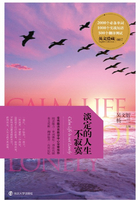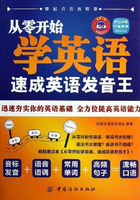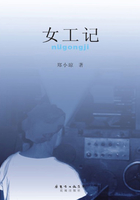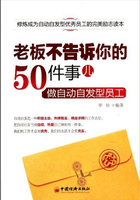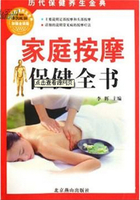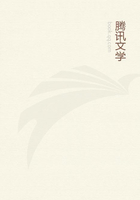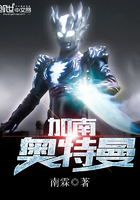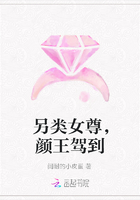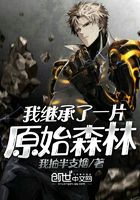ThRe pearl river is formed where the West River, the Northiver and the East River meet, a colossal dragon whose body and claws wind their way around the landscape of south China, steadily heading southwards.
If China's rivers were measured by annual runoff, the Pearl River would be counted China's second river in fact as well as by repu-tation. Only a small percentage of its annual flow is produced by the Yellow River. Upon reaching its delta it spreads out like a fan, its waters splitting into many smaller rivers, each one forming a vast gate (or "men") onto the ocean: Humen[1] , Modaomen, Jitimen, Hengmen, Yamen and so on, showing that it has opened itself to the world. It is not a river prone to violent change; each of the four seasons has a similar outflow to the last. People do not live according to this dragon's whims; in fact, it seems entirely docile. Compared to other great rivers in China, the Pearl River has the lowest sediment content, its channel almost never silting up, and when one takes its multitude of tributary streams into account, it is clear that its volume has long been underestimated. During the thousands of years of ancient Chinese cultural history, compared to the rises and falls of royal dynasties on the central plain, or the many times when the empire fell apart and was brought together again, the remote and untamed Pearl River basin seemed hardly worth writing about.
On the 9th of June 1983, near the Guangzhou Chinese Export Commodities Fair, where a small residential compound named Xianggang was being built on a hill, an imperial tomb was surpris-ingly discovered. Inside it was a treasure trove of priceless cultural artefacts that shocked archaeologists, who were only more surprised when they learned it was the tomb of Zhao Mei, grandson of Zhao Tuo, the first king of the Nanyue Kingdom, founded in the years between the fall of the Qin Dynasty and the rise of Han (around 210 BC). Amongst the burial goods were several astonishing finds:five elephant tusks from Africa, each 120cm long; a curiously deco-rated round silver box with a garlic-clove pattern from Persia or Babylon; 32 golden half-moon ornaments on the dead king's body, whose soldered pearls showed characteristics of ancient Euro-pean workmanship; a lacquerware box containing frankincense produced mainly along the banks of the Red Sea, as well as copper and pottery incense burners, exquisitely crafted drinking vessels of rhinoceros horn, jade ornaments in the shape of rhinoceroses, glass goblets clearly from some far-off place, pearl curtains of cornelian stone and so on.
These imported products were irrefutable evidence that the Western Han Dynasty and the Nanyue Kingdom already had developed and flourishing international trade links. The Records of the Historian and Chronicles of the Han clearly contain refer-ences to Panyu (modern Guangzhou) as a county seat of the Qin and Han empires, and there is no doubt that early in the Han period (206 BC-AD 220), the Silk Road was opened up by Zhang Qian's expedition to the Western Regions,[2] far-off Guangdong, the so-called "barbarian land" to the south, was regularly involved in commercial exchanges with kingdoms across the ocean, becoming an important port area and distribution centre for precious foreign products.
This was an earth-shattering discovery.
The archaeological dig on Xianggang Hill discovered the first material evidence that the maritime Silk Road predated the land route considerably. The Pearl River basin was where the first foreign traders arrived in China; Sino-foreign relations began in Guangdong.
The extent to which different civilisations interact is never limited to the purely material; philosophical and religious ideas cannot but follow along, and during the Northern and Southern Dynas-ties period (420-589), Buddhist monks who came to China along both the sea and land Silk Roads. Of these monks, by far the most well-known and the one about whom the mythical history is most developed was Bodhidharma. He arrived in Guangzhou, and to this day in the Xiguan District of the city there exists a small alley named "Where the West first came to China". According to local legend, it was here that Buddhist teaching arrived from the West[3] and got its first foothold in China. The site is honoured as the origins of Chan Buddhism.[4] Over a hundred years later, a young woodcutter came to the temple on Huangmei Mountain to study Buddhism, reciting a hymn so beautifully that he inherited the legacy of Chan from the senior monks:"Fundamentally there is no Bodhi tree, Nor stand of a mirror bright. Since will is void from the beginning, where can the dust alight?" That woodcutter was Hui Neng, a great thinker and religious reformer who played a significant role in Buddhism's Sinicisation. Nowadays, Cantonese people hold the utmost respect for this reportedly illiterate man who nonetheless exemplified the wisdom of South China, and hail his bold integration of Chinese and foreign cultures and willingness to be a trailblazer.
In 1582, the tenth year of the Ming Dynasty's Wanli Emperor, an emissary from the West attempted to gain insight into the myste-rious Oriental civilisation. He too landed in Guangdong, arriving first at Macau, passing through Zhaoqing, Shaoguan and other cities, before finally reaching Beijing, where he eventually died. He drew the first world map ever produced in China, and translated the Four Books of the Confucian Canon into Latin. He was Matteo Ricci, a Jesuit priest who made an outstanding contribution to Sino-Western relations, and has been called "the world's first global citizen."
Whether due to divine providence or simply an accident of history, in the same year as Ricci's arrival there occurred in Humen at the mouth of the Pearl River, at the time a seemingly unim-portant place, an event that would quietly revolutionise China. Chen Yi, a man from Beizha Village in Humen, imported a high-yield crop from Vietnam that could grow wild and in drought conditions - the sweet potato. This was China's first taste of such crops, and it went on to change completely the rice-based mono-culture system of South China, as well as practically changing the food chain where arable land was scarce or where crop failures were frequent. The population of South China shot up during the Ming and Qing Dynasties (1368-1911), which caused the appear-ance of a surplus population in China and which experts consider to be related to the large-scale cultivation of the sweet potato.
In fact, more than half a century before Chen Yi's importation of the sweet potato and Ricci's arrival in China, during the reign of Ming Emperor Zhengde (1505-1521), a man named He Ru from Humen in Dongguan City was serving as an offcial in nearby Baisha, and discovered a new kind of weapon on a Portuguese ship anchored at Tunmen in Hong Kong - a Portuguese cannon, and in a combination of curiosity and sense of duty asked to board the vessel to inspect it. At that time the "redhair"[5] sailors had no interest in confidentiality, nor any concept of intellectual property. Seeing a Chinese offcial taking an interest in their cannon they turned the ship and fired a shot to show off, hoping to give him a fright. He Ru was overjoyed, secretly drawing up sketches and writing down the principles of operation, on his return instructing the most talented smiths of Humen to make copies.
In 1521, as Portuguese sailors were terrorising the boat-dwelling Dan people who lived along China's south coast, the deputy head of the Guangdong coastguard Wang Kuang ordered his navy to fire on the "redhairs" at Tunmen, on the opposite shore to Humen. The cannon copied at He Ru's orders proved superior to the Portu-guese cannon, and the Portuguese were forced to flee. In 1522 occurred the Battle of Xicaowan in Xinhui County. The Ming navy won a total victory, capturing two Portugese ships and 42 sailors, beheading over 30 of them, as well as taking a number of foreign cannon. News of the victory quickly reached the capital, the emperor decreeing:"All captured cannon are to be sent to the arti-sans of the capital, He Ru is to be promoted to the vice-magistrate in Jiankang subprefecture,[6] all the artisans of Humen are to be sent to Nanjing to make new 'foreign cannons', which are to be installed upon ships fighting against the pirates."
By the reign of Emperor Chongzhen (the last Ming emperor, reigned 1628-1644), the cannon of general Yuan Chonghuan wounded the Manchu ruler Nuerhachi, which later led to his death. Yuan Chonghuan gave exemplary military service to the Ming, and it just so happens he too was from Dongguan.
The very first naval battle between China and Britain occurred off the shore of Humen. It took place in the final years of the Ming Dynasty and resulted in a Chinese victory, the cannons of the Ming navy proving an invaluable asset. At that time, Chinese and Euro-pean armed forces were of comparable quality, and the upper hand was gained by tactics during battle. Had Britain not undergone an industrial revolution which increased its power considerably, and had the Qing Dynasty not stagnated and ossified, the later Opium Wars would have been entirely different.
What's more, the reputation of Humen as a place whose people dare to innovate goes just as much for the rest of Guangdong, the "barbarian land" where Heaven is far above and the emperor is far away. From the banning of opium at Humen by Lin Zexu, through the Opium Wars, the Jintian Uprising[7] , the petition protesting Chinese concessions to Japan after the first Sino-Japanese War (1894-1895)[8] , the reforms of Kang Youwei and Liang Qichao, and Sun Yat-Sen's repeated attempts at revolutionary uprisings, right up to the overthrow of the imperial system and the foundation of the Republic of China (1912), the sons of the Pearl River have astonished the world in their pursuit of the new. By the 1920s, Guangzhou, on the lower reaches of the river commanded even more esteem, having become a true centre of Chinese political culture and the wellspring of revolution. Revolutionaries, philoso-phers, intellectuals and all manner of opportunists converged on the Pearl River's shores, to share in the abundance of new ideas brought up by the sudden interaction of Chinese and Western culture and absorb the best and most advanced concepts modernity could offer. Here, on the stage of modern and premodern China, they played out a majestic production both inspiring and tragic.
In an attempt to preserve the "Heavenly Dynasty", Lin Zexu angrily had all the opium imported by the "English barbarians"destroyed. The opium's importation was a contemptible scheme by the "barbarians" designed to make up for Britain's colossal trade deficit with China; they later discovered that it was corroding away the vast and rotting "Heavenly Dynasty": an invaluable method of forcing open China's market for the looting. So Lin had the opium destroyed, the apricot-yellow imperial flag in his hand; what he could not have known was that he was turning the pages of history, and turning the vast expanse of the Pearl River upon which such fierce battles had been fought into the place where scholars agree premodern China began.
Hong Kong, on the left bank of the Pearl River, was seized by the British, and soon after became yet another pang in the heart of the Chinese people, brought on by national humiliation. Then, in the impoverished country Hua County on one of the river's tributaries, the unsuccessful examination candidate Hong Xiuquan left home in despair, eventually wandering around the streets of Guangzhou. After searching high and low, he came upon Liang Fa, like him a peasant from a poor village in Gaoming County, who had like him undergone innumerable hardships as he rose from the lowest rank of society to become the first Chinese Christian missionary. Liang sympathised with Hong's troubles, and gave him a pamphlet on Christianity that he himself had translated. Its meaning was essentially lost on Hong, who read it several times without really understanding before deciding to go to Hong Kong and convert to this Western religion but was surprised to be rejected in disdain by the church.[9]
Infuriated by this, he set up his own religion based on visions he claimed to have received, asserting that he was God's son and establishing a Chinese teaching for worship of the "Christian God". Disseminating his teachings in Cantonese, which in the period between the Opium Wars carried heavy penalties, the people's anger flared up all over China in response to his call, eventually leading to a full-blown civil war between Hong's disciples and the Qing throne. The armies of the "Heavenly King" (Hong), made up of impoverished peasants, swept through half of China like a hurricane, and on capturing Nanjing Hong declared the "Taiping Heavenly Kingdom". The already weakened Qing Dynasty had to exert all its strength over more than ten years battling this bizarre theocracy which was simultaneously Chinese, Western and neither, finally defeating its armies one by one, by which time the rot had set in; the dynasty was fatally destabilised, there would be no return to glory.
Hoping to save and strengthen the country, Li Hongzhang with others launched the Self-Strengthening Movement. One rather eye-catching feature of the movement was its inclusion and reli-ance on the suggestions of one of the first Cantonese students to go abroad, the recently returned Rong Hong, that some 120 natu-rally gifted students be sent to the USA. On the 12th of September 1872 the first group of thirty young Qing subjects sporting long queues on their heads arrived in San Francisco, instantly drawing the curiosity and attention of the Americans they met. The Ameri-cans didn't realise that amongst these students, about whom they could barely tell the gender, were Zhan Tianyou, known today as the "father of China's railways", and Tang Shaoyi, later the first Premier of the Republic of China, both of whom had been chosen by examination in Guangdong. Of all the students sent to the USA in this way, 70% were originally from Guangdong, and seven came from Tang Shaoyi's hometown[10] alone.
However, whilst these talented young men had a profound impact on China after returning from their studies, expecting them to single-handedly bring China back to modernity was wishful thinking. More learned men from the banks of the Pearl River were still waiting to step forward, namely Nanhai County's Kang Youwei and the "genius of Xinhui", Liang Qichao. These
gifted scholars went straight to the capital, doing their utmost to convince the young Emperor Guangxu to adopt reformist measures, with the dream that the ailing Heavenly Dynasty could adopt a constitutional monarchy along British lines, and return to preeminence as Japan had done, snatching life from the jaws of death. Their endeavours foundered upon one insurmountable obstacle; reformist ideas were a serious threat to the power of the Empress Dowager Cixi, and the program of reform was shattered at a stroke by her intervention. Six prominent ministers identified as supporters of Kang and Liang were beheaded, the reformers themselves forced to flee abroad.
It was at this point that a truly great man came onto the stage. Sun Yat-Sen, who at a young age had gone to the West and received a Western education, was opposed to the existing system; what sympathy he had had for the Heavenly Dynasty was gone, and he was unwilling to rush around convincing powerful offcials to enact the reforms he saw as essential. Conservatives ridiculed him as "a cannon firing blanks", but Sun proved to be more than a good talker, opposing reformism and doing all he could to overthrow the imperial system, the only way to realise the China he envis-aged. After innumerable setbacks and defeats, this cannon fired a shot that removed the boy emperor Puyi from the throne, and became the esteemed founder of the Republic of China.
These world-shaking figures of the late 19th and early 20th centuries were all sons and grandsons of the Pearl River, men from the land where brackish waters meet, all with some sort of link to foreign civilisation. Kang Youwei is also known as Kang Nanhai[11] ;his hometown is a stone's throw away from Guangzhou City, centre of the violence of the Opium Wars. Liang Qichao's home, Xinhui County, had been sending sons abroad to seek their livelihood for hundreds of years, and was also one of the four villages that sent the most people to the Americas to work as coolies in the 19th century. Sun Yat-Sen had more foreign links than any of them; he'd lived and breathed the West in Honolulu. The extent to which these men were influenced by Western culture was directly proportional to the radicalism of their attitudes towards reform.
On a small island in the middle of the Pearl River named Huangpu,[12] Sun Yat-Sen created a basic military academy with help from the Chinese Communist Party and the Soviet Union. The gates of the academy were unimpressive, but out of them would walk the generals that would command armies of hundreds of thousands, even of millions, an accomplishment that puts all other military academies to shame. Yet these generals were split into two irreconcilably opposed groups that would later be at war - prin-cipal against colleague, student against teacher, classmate against classmate - for several decades. This process, which almost entirely absorbed the first half of China's 20th century, became a grand spectacle in world military history. Yet, great preeminence requires the accumulation of great capabilities.
There are those who maintain that in a position so well-suited to the influx of ideas from across the world, southern Guangdong has merely enjoyed the benefits of geography: that the vast Pearl River did not appear to have nurtured its civilisation into a fully-formed patrimony, which justified its having been thought of as a periphery by the central plain. Southern Guangdong is China's first point of interaction with other civilisations. As China's protective-ness over its traditional culture grows, so will people inculcate the idea of a superior culture into their children and grandchildren, until it becomes insulation against the outside world. Macau, a Portuguese colony for over four hundred years, and Hong Kong, a British colony for over one hundred years are examples of this; the people who live there refer to foreigners as "devils". Men are called "he-devils" and women "she-devils". Boys and girls are "devil-chil-dren" ("devil-boy" and "devil-girl", respectively). It has always been thus, and remains so even now.
Where "family education" is concerned, people from Hong Kong and Macau are more traditionally-oriented than their main-land counterparts, preserving more completely and tenaciously traditional ideas of "right". However, the Cantonese have never been a people to blindly reject the advantages of dealing with the "devils", and often at critical moments surprise others by putting them to use. Those founders who set off the tidal wave of revo-lution were well-versed in such thinking, often embarking upon courses of action at the time thought scandalous.
Wen Tianxiang's (1236-1283) sublime poem At the mouth of the Pearl River talks of thousands of huge ships going past every day. Even then, the river was already a lively, precious commer-cial resource. On the 26th of January 1984 and the 23rd of January 1992, a man of small stature who had changed China's future sailed on a fast ship across the vast Lingding Sea. This man, the great architect of China's Reform and Opening Up, had meticulously planned and implemented a great revolution that reversed China's fate, and was planning to carry out what was simultaneously the boldest and the most prudent experiment in the history of world socialism. Casting hopeful glances towards southern Guangdong, he entrusted the weighty responsibility of its execution to the descendants of Sun Yat-Sen.
And so, the curtain was pulled back on a spectacle for the ages . . .
注 释
[1]. A strait at the mouth of the Pearl River, also known as the Bocca Tigris.
[2]. The area of Central Asia beyond Yumen Pass in modern Gansu Province, today and at various points in the past part of China.
[3]. At that time meaning India.
[4]. Better known in the West by its Japanese name, Zen.
[5]. Old Chinese way of referring to Europeans.
[6]. Old name for Nanjing.
[7]. Known better in English as the Taiping Rebellion.
[8]. Known in Chinese as Gong Che Shang Shu.
[9]. A surprisingly common occurrence at the time. Many churches were on the lookout for so-called "rice Christians": Chinese who converted in search of material benefits, rather than spiritual ones.
[10]. Tangjiawan Village in Xiangshan County.
[11]. Nanhai meaning "Southern Sea".
[12]. Historically romanised as Whampoa.

